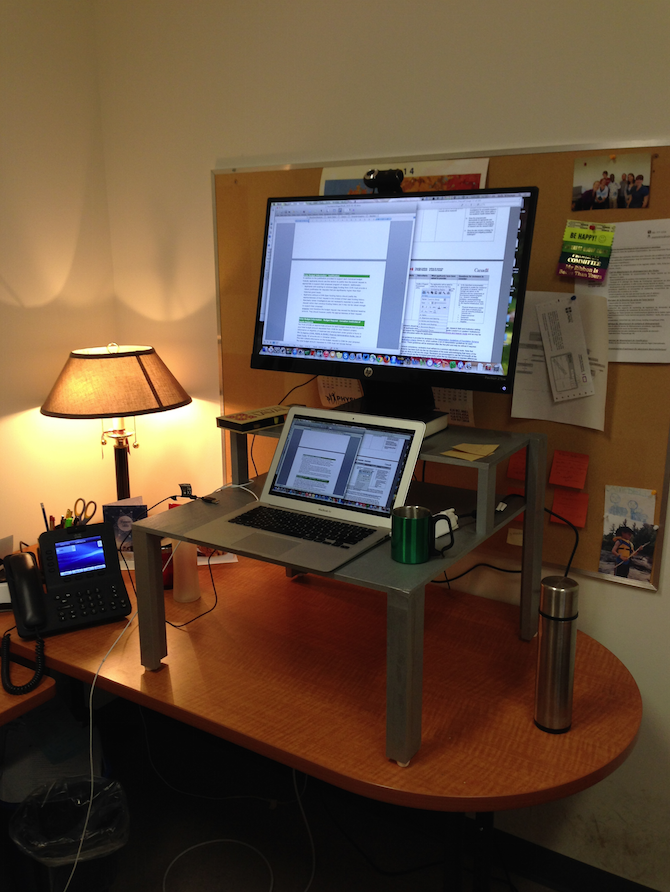Here are the cover letter and open letter sent to agencies as part of a campaign to end the Canadian Common CV.
You may also like
Note: I originally wrote this post for Emmi Solutions, and it was also picked up by Kevin MD. ~~~~~~~~~ My first week […]
I have organized a symposium at an upcoming conference in Miami. The topic is medical decision making in diabetes, and the focus […]
I’ve realized recently that even as my research interests take me further and further away from my engineering background, I remain incredibly […]
My DIY standing desk at my university office “Sitting is the new smoking,” they say. Since I already have type 1 diabetes, […]


2 thoughts on “#EndTheCCV update”
Please end the ccv and replace it with a simple Biosketch NIH style. The CCV is draining so much energy which could be use for much more important things (like research).
Mathieu Ferron, PhD
Professeur agrégé de recherche IRCM – Associate IRCM Research Professor
Tier 2 Canada Research Chair in Bone and Energy Metabolism
Director, Molecular Physiology Research Unit
Institut de recherches cliniques de Montréal (IRCM)
110 ave des Pins O.
Montreal, Québec
H2W 1R7
Tel: 514-987-5754
Email: mathieu.ferron@ircm.qc.ca
Although I have learned to live with the CCV, in my past experience as a researcher and peer reviewer in the U.S. I have found the 5-page Biosketch used by NIH, NSF, VA, etc. to be highly effective and efficient, both for the applicant and the peer reviewers. The semi-structured format allows considerable flexibility for applicants of all types (academic, community, industry, government, etc.) to include the information that makes the most sense for them, rather than being constrained to use an academic format. For peer reviewers, the 5-page BioSketch saves considerable time and resources for evaluating team members of a grant application.
It is particularly concerning that the CCV restricts the listing of publications and other contributions to a relatively short period of time (5 to 6 years), making it difficult for researchers of all types and fields to illustrate their contributions. A format that allows an applicant to choose what information is relevant to include makes the most sense. Peer reviewers are free to determine whether that information is relevant. The current CCV format assumes applicants and peer reviewers are not capable of achieving this.
I would support completely doing away with a centrally controlled CV system, replacing it with a semi-structured free-form CV such as the 5-page NIH Biosketch.